“London Rococo”, the glass room with the revolving floor
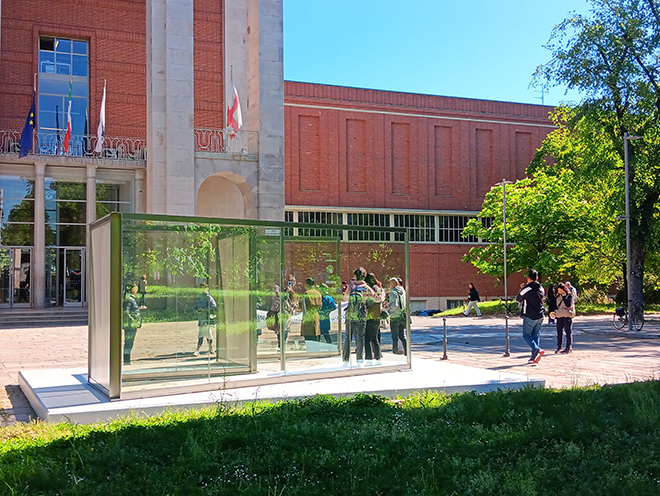
© arcomai I “London Rococo”.
In the contemporary art panorama, few artists have been able to challenge and reinterpret the boundaries between art, architecture and public space with the same audacity as Dan Graham. Through a multidisciplinary practice spanning installations, sculptures, performances and theoretical writings, Graham has left an indelible mark on the world of contemporary art and architecture. The Milan Triennale wanted to pay homage to the well-known American artist, who passed away in 2022, with an exhibition (open until May 12) entitled: “The Passing Time City”.
This exhibition, curated by Maurizio Bortolotti, presents three main installations that invite the public to interact and reflect. At the entrance to the Palace of Art, there is “London Rococo”, a pavilion that was originally designed in 2012 for “Sculpture in the City” in London. In the Triennale garden, there is “Sagittarian Girl” from 2008, a structure that offers a space for reflection surrounded by nature. Inside the Triennale, a part of the “Cuore” space hosts the “Swimming Pool/Fish Pond” model from 1997 and a video useful for reconstructing and understanding Graham’s creative evolution since the 1980s.
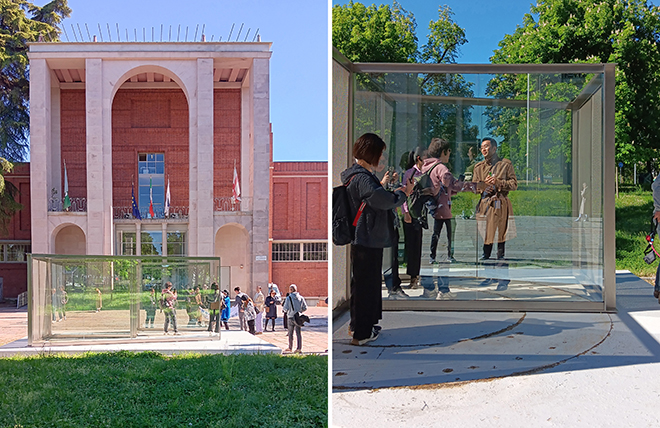
© arcomai I “London Rococo”
The artist was born in 1942 in Urbana, Illinois (USA), and grew up in a family of Jewish origins. His artistic training is strongly influenced by minimalism and the “conceptual art” of the 60s and 70s, movements that contributed to shaping his artistic and conceptual vision. Through the use of industrial materials and the reduction of formal elements to the essential, Graham explores the relationships between space, perception and human subjectivity, anticipating themes that will be central to his future artistic practice. One of the most distinctive characteristics of Dan Graham’s architecture is their ability to challenge the traditional conventions of architecture, offering the viewer immersive and interactive experiences that go beyond the simple act of observing. And this is thanks to the creation of “visitable” pavilions, works created starting from the 1980s and which are located on the border between art and architecture.
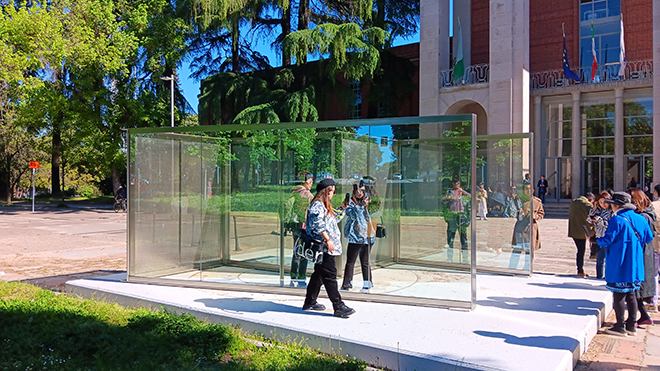
© arcomai I “London Rococo”
In particular, these are structures usually made of transparent wings made with sheets of mirrors and reflective glass capable of creating surprising visual effects. In these spaces the viewer is invited to interact with the work and reflect on his own role inside and outside it with inevitable effects of disorientation and amazement. In doing so, the public physically enters these “rooms” on whose surfaces they not only find their own reflection but also the reproduction of the surrounding environment, questioning their intimate preconceived conceptions of what is real and what appears.
“London Rococo” summarizes the artist’s aesthetic aspirations in this area of his research. It is an “open room” and transparent delimited by 5 glass walls obtained by folding a sheet of glass on itself and framed by an elegant steel “frame”. A hybrid place in which the following are reflected: the city, the park, the Triennale building and the visitors; and from here the sum of these elements and actions is projected outwards, challenging our perception and understanding of the surrounding space. The work is placed on a white base on which is imprinted – as on a shroud – the skeleton of the head of the TBM Stefania (58 tons), one of the six moles that dug the Metro 4 tunnel in Milan, and exhibited here ( in March last year) as part of the “Building the Future” exhibition, promoted by Webuild with the Triennale.
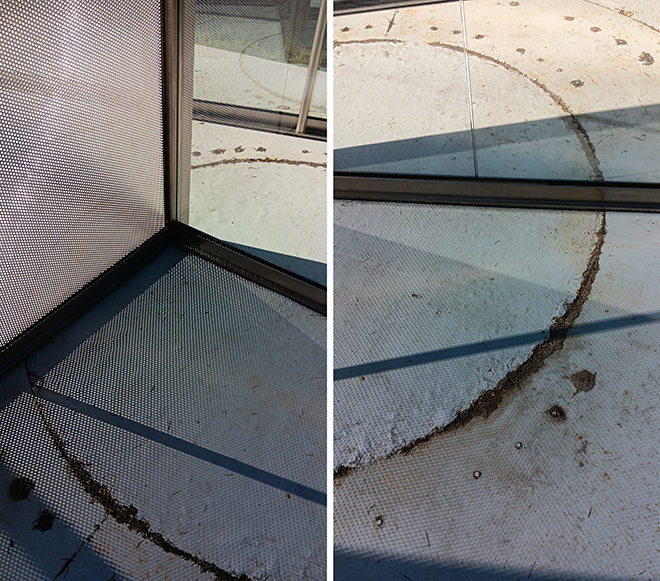
© arcomai I “London Rococo”
Before its transfer, the “mole” must have been left on this support for a sufficient period of time to imprint its shape. The wind and water contributed to marking and dirtying those grooves, adding a kinetic trace on the surface that gives the impression that the room rotates on itself. That imprint behaves like a “time machine” which paradoxically decontextualises the artist’s installation, making it more abstract and mysterious, adding a further and unexpected sense of estrangement. An unexpected effect and certainly not intended by the Triennale which reused – saving money – a support for a work designed for another location.
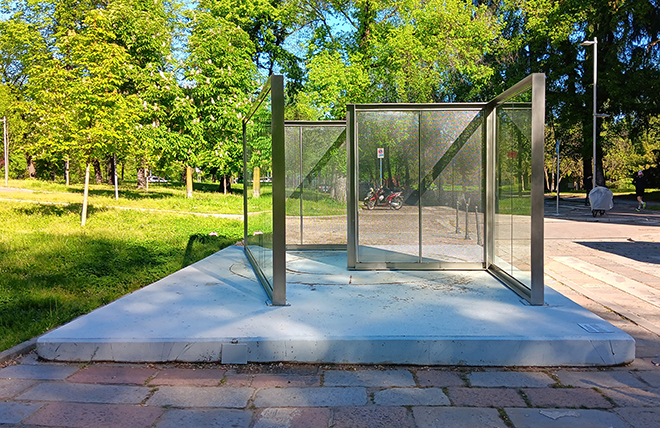
© arcomai I “London Rococo”
